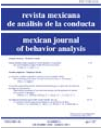On the differences between Skinner s Radical Behaviorism and Kantor’s Interbehaviorism
Main Article Content
Abstract
Shinner’s radical behaviorism and Kan tor’s interbehaviorisrn are contpared and contrasted. Botit consider Meir subject ntatter to be tite beitavior of organisrn in rda tion to their stirnulating environrnents. lío wever, while Kantorfocusés on tite reJa tion between responding and stimulating as a unit of analysis, Skinner focuses on classes of responses as units. As a result, stimulusfunctions are regarded by Skinner as opera tives, differentiated in terms of tite kinds of con troJ titey exert ove, responding; while for Kanto, stiniultts functions are sirnply tite actions of objects participating in interdependent relations wititresponse functions. In sitort, Skinner’s analysis is causal and explanatory; Kantor’s is functional and descriptive. Explanation is achieved lar Skinner by reduction to biology. An organism in said to be citanged, ph ysiologically, be operant conditioning- Ontogenesss tn turn, is explained be way of natural selection: operant conditioning changes organssmns becase tite capacity to be conditioned is biologicaUy inherited, as in tite capacity to be conditioned by sorne stimuli more titan others. Kantor, on tite otiter itand, assumes titat an organism’s ontogenic itistory is refiected in its current interbeitavior. Titis is a purely descriptive account, and as sucit, no appeal to itnaginary biology, as an explanation for psychological events, is requ~red. It is concluded that these dtfferences between Skinner s radical behaviorism and Kan tors interbeitaviorism cannot be reconciled without violently transforrning tite views of botit philosophers.
Article Details
How to Cite
Parrott, L. J. (2011). On the differences between Skinner s Radical Behaviorism and Kantor’s Interbehaviorism. Mexican Journal of Behavior Analysis, 1(1), 95–115. https://doi.org/10.5514/rmac.v1.i1.26833
